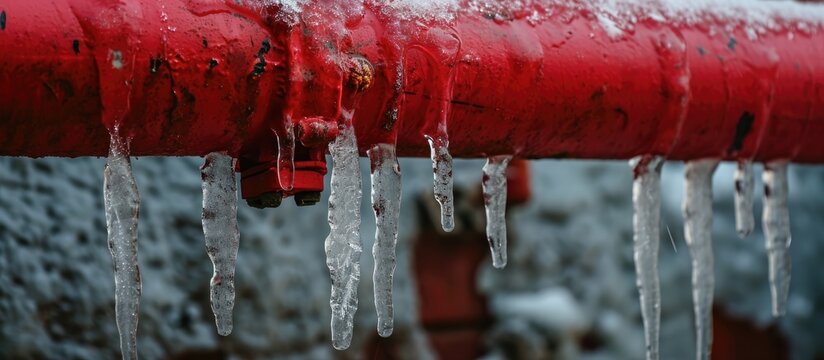Essential Advice for Avoiding Frozen Plumbing in Cold Weather Conditions
Essential Advice for Avoiding Frozen Plumbing in Cold Weather Conditions
Blog Article
Were you trying to locate info concerning How to prepare your home plumbing for winter weather?

Cold weather can ruin your plumbing, specifically by freezing pipes. Below's how to stop it from occurring and what to do if it does.
Introduction
As temperature levels drop, the danger of icy pipes increases, possibly resulting in pricey fixings and water damages. Comprehending just how to prevent frozen pipelines is crucial for property owners in cool environments.
Prevention Tips
Insulating vulnerable pipes
Wrap pipes in insulation sleeves or make use of heat tape to protect them from freezing temperature levels. Concentrate on pipes in unheated or exterior areas of the home.
Home heating strategies
Maintain indoor rooms sufficiently warmed, especially locations with plumbing. Open cabinet doors to allow warm air to flow around pipes under sinks.
How to identify frozen pipes
Look for decreased water circulation from taps, uncommon odors or sounds from pipes, and noticeable frost on subjected pipelines.
Long-Term Solutions
Architectural modifications
Consider rerouting pipes away from outside walls or unheated areas. Add additional insulation to attic rooms, basements, and crawl spaces.
Upgrading insulation
Buy high-quality insulation for pipes, attics, and walls. Proper insulation assists keep consistent temperatures and reduces the danger of icy pipes.
Shielding Outdoor Plumbing
Yard tubes and exterior taps
Detach and drain pipes yard tubes before wintertime. Mount frost-proof faucets or cover outdoor faucets with insulated caps.
Recognizing Icy Pipelines
What creates pipelines to ice up?
Pipelines freeze when subjected to temperatures below 32 ° F (0 ° C) for expanded durations. As water inside the pipes freezes, it increases, taxing the pipeline walls and possibly causing them to rupture.
Threats and damages
Icy pipelines can lead to water system disturbances, home damages, and expensive repair services. Burst pipes can flood homes and trigger substantial structural damage.
Indicators of Frozen Piping
Identifying frozen pipelines early can prevent them from bursting.
What to Do If Your Pipelines Freeze
Immediate actions to take
If you think frozen pipelines, maintain taps open to ease pressure as the ice melts. Use a hairdryer or towels soaked in hot water to thaw pipelines gradually.
Conclusion
Avoiding icy pipes calls for aggressive procedures and quick feedbacks. By comprehending the reasons, indications, and safety nets, home owners can safeguard their pipes during winter.
5 Ways to Prevent Frozen Pipes
Drain Outdoor Faucets and Disconnect Hoses
First, close the shut-off valve that controls the flow of water in the pipe to your outdoor faucet. Then, head outside to disconnect and drain your hose and open the outdoor faucet to allow the water to completely drain out of the line. Turn off the faucet when done. Finally, head back to the shut-off valve and drain the remaining water inside the pipe into a bucket or container. Additionally, if you have a home irrigation system, you should consider hiring an expert to clear the system of water each year.
Insulate Pipes
One of the best and most cost-effective methods for preventing frozen water pipes is to wrap your pipes with insulation. This is especially important for areas in your home that aren’t exposed to heat, such as an attic. We suggest using foam sleeves, which can typically be found at your local hardware store.
Keep Heat Running at 65
Your pipes are located inside your walls, and the temperature there is much colder than the rest of the house. To prevent your pipes from freezing, The Insurance Information Institute suggests that you keep your home heated to at least 65 degrees, even when traveling. You may want to invest in smart devices that can keep an eye on the temperature in your home while you’re away.
Leave Water Dripping
Moving water — even a small trickle — can prevent ice from forming inside your pipes. When freezing temps are imminent, start a drip of water from all faucets that serve exposed pipes. Leaving a few faucets running will also help relieve pressure inside the pipes and help prevent a rupture if the water inside freezes.
Open Cupboard Doors
Warm your kitchen and bathroom pipes by opening cupboards and vanities. You should also leave your interior doors ajar to help warm air circulate evenly throughout your home.

Hopefully you enjoyed reading our part about How to prepare your home plumbing for winter weather. Many thanks for spending some time to read our piece of content. Loved our write-up? Please quickly share it. Let somebody else find it. I take joy in your readership.
Information Here Report this page